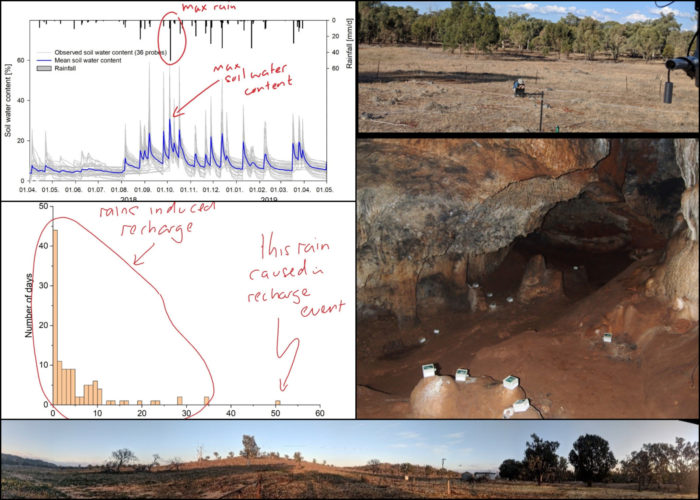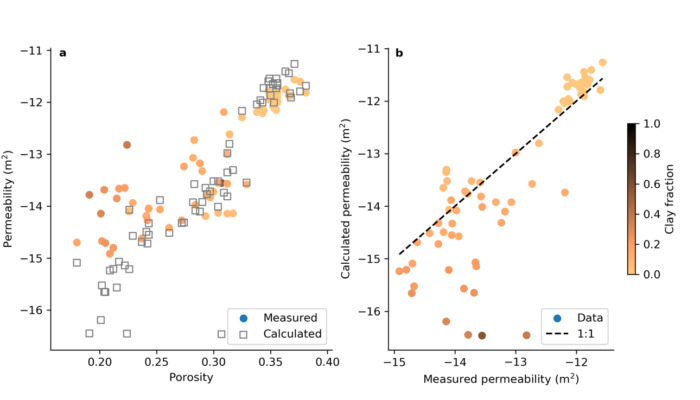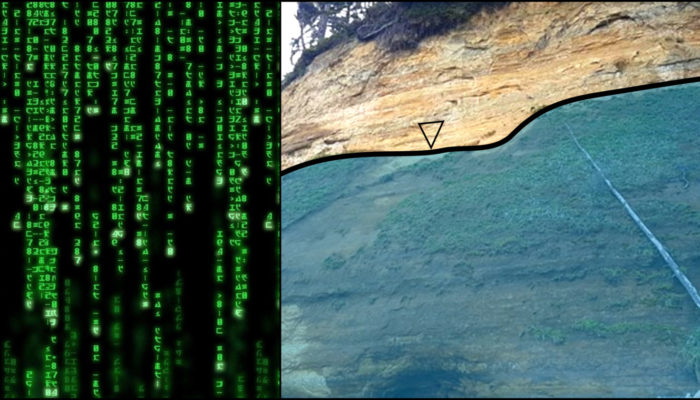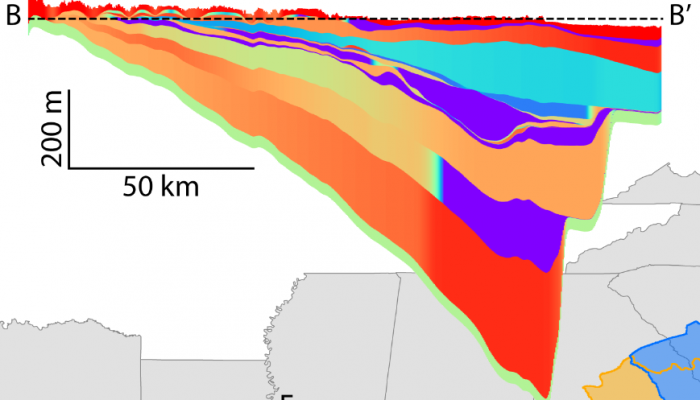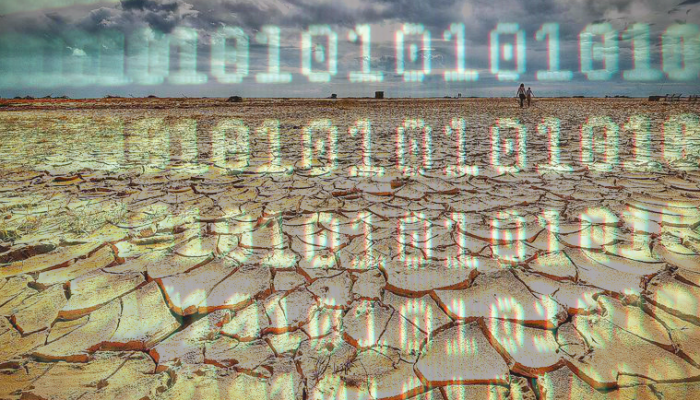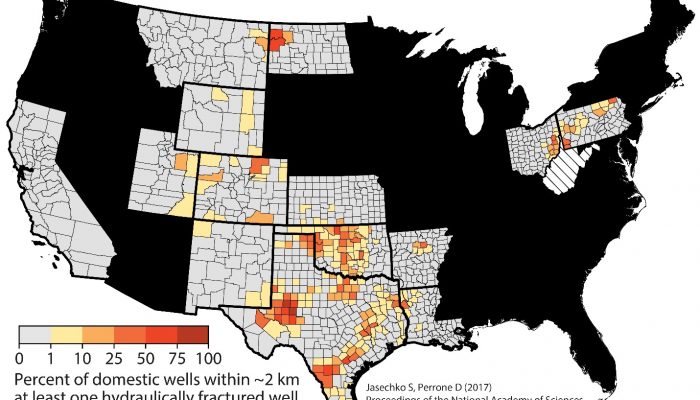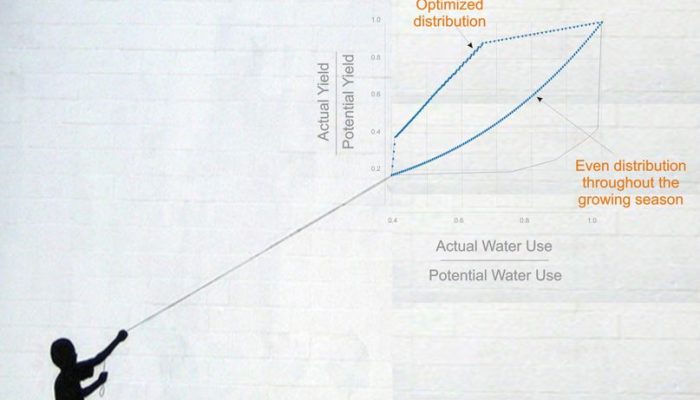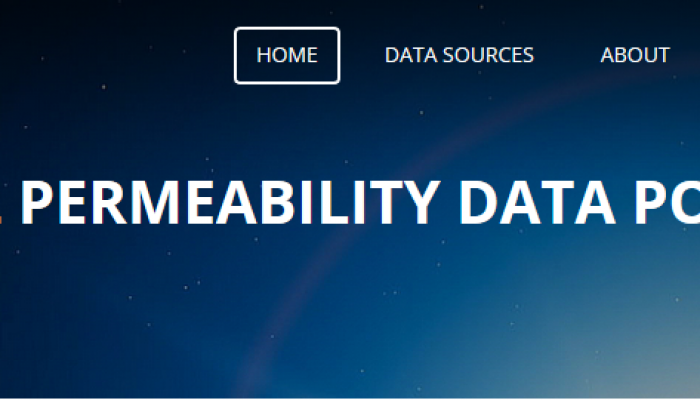Post by Andy Baker, professor in the Connected Waters Initiative Centre at UNSW Sydney, Andreas Hartmann, assistant professor in Hydrological Modeling and Water Resources at the University of Freiburg, and Romane Berthelin, PhD student in Hydrological Modeling and Water Resources at the University of Freiburg. Here in New South Wales (NSW) in southeastern Australia, a long-running drought continue ...[Read More]
A do-it-yourself Jupyter notebook to constrain sediment permeability
Post by Elco Luijendijk, Junior lecturer in the Department of Structural Geology and Geodynamics at Georg-August-Universität Göttingen and WaterUnderground founder Tom Gleeson (@water_undergrnd), Associate Professor in the Department of Civil Engineering at the University of Victoria. Most of the groundwater on our planet is located in sedimentary rocks. This is why it is important to know how eas ...[Read More]
Doing Hydrogeology in R
Post by Sam Zipper (@ZipperSam), current Postdoctoral Fellow at the University of Victoria and soon-to-be research scientist with the Kansas Geological Survey at the University of Kansas. Using programming languages to interact with, analyze, and visualize data is an increasingly important skill for hydrogeologists to have. Coding-based science makes it easier to process and visualize large amount ...[Read More]
Groundwater and drought
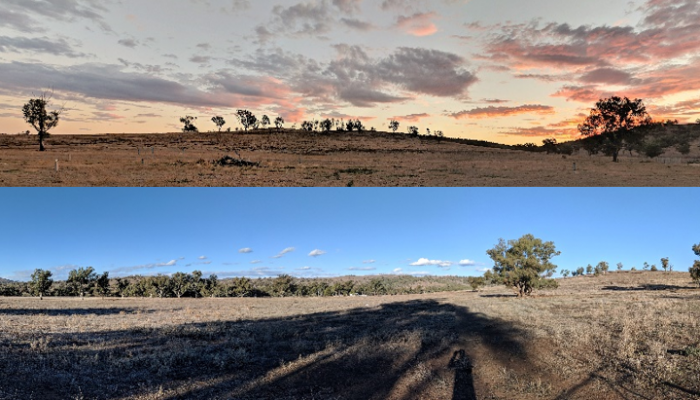
Post by Andy Baker, Professor researching groundwater, caves, past climate, organic carbon and more at the University of New South Wales, in Australia. __________________________________________________ Drought is in the news here in New South Wales, Australia. But how are rainfall, drought and groundwater related? First, we need to understand what drought is. Is it a water shortage? Or a lack of ...[Read More]
How deep does groundwater go? Mining (dark) data from the depths
Post by Kevin Befus, Assistant Professor at the College of Engineering and Applied Science at the University of Wyoming, in the United States. __________________________________________________ We’ve all been asked (or do the asking), “where does your water come from?” This is a fundamental question for establishing a series of additional questions that can ultimately help define strategies for va ...[Read More]
Data drought or data flood?
Post by Anne Van Loon, Lecturer in Physical Geography (Water sciences) at the University of Birmingham, in the United Kingdom. __________________________________________________ The basis for (almost) all scientific work, at least in the earth and environmental sciences, is DATA. We all need data to search for the answers to our questions. There are a number of options to get hold of data; we can ...[Read More]
Hydraulic fracturing close to groundwater wells
Post by Scott Jasechko, Assistant Professor of Water Resources with the Bren School of Environmental Science & Management, at the University of California, Santa Barbara, and by Debra Perrone, non-resident Fellow at Water in the West and an Assistant Professor, also at the University of California, Santa Barbara, in the United States. _______________________________________________ In December ...[Read More]
Good groundwater management makes for good neighbors
Post by Samuel Zipper, postdoctoral fellow at both McGill University and the University of Victoria, in Canada. You can follow Sam on Twitter at @ZipperSam. ___________________________________________________________ Dedicated Water Underground readers know that this blog is not just about water science, but also some of the more cultural impacts of groundwater. Keeping in that tradition, today’s ...[Read More]
Crop kites
Post by WaterUnderground contributor Mikhail Smilovic. Mikhail is a PhD candidate in the Department of Civil Engineering at McGill University, in Quebec. Crops use water for photosynthesis, absorbing nutrients, and transpiration, or the plant-equivalent of sweating. A crop may experience water-stress if the soil surrounding the roots is not adequately wet, and this stress will affect the crop dif ...[Read More]
A new data portal for permeability!
Permeability data is tucked many dusty corners of the web and in even dustier reports, books and thesis. The purpose of the Crustal Permeability Data Portal is to ‘unearth’ (pun intended!) permeability data by providing links to online, peer-reviewed permeability data that is open to anyone around the world. This data portal collates links to other data sources rather than hosting data and is a co ...[Read More]

